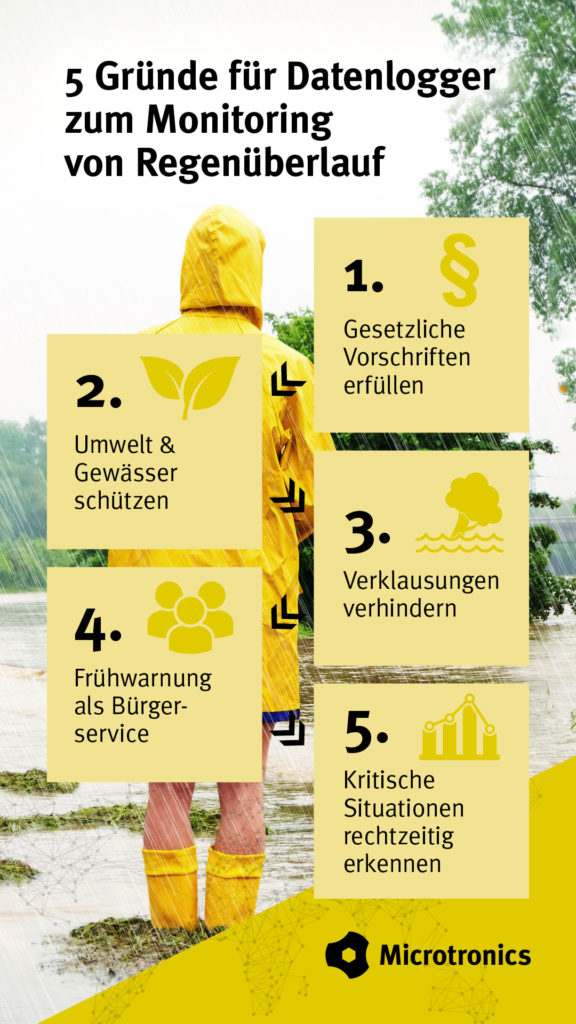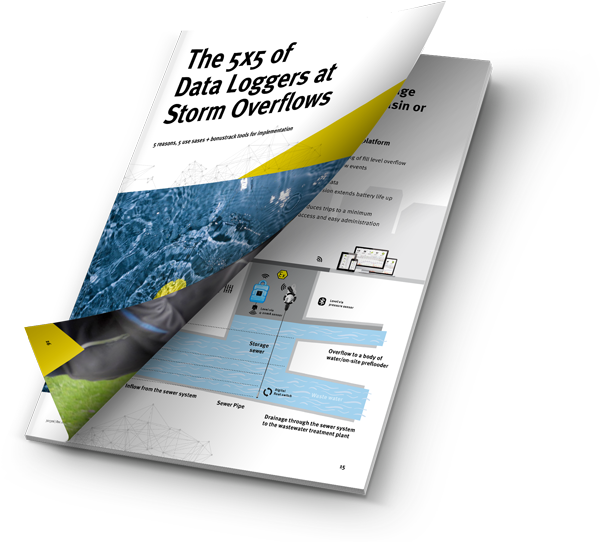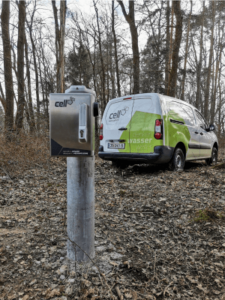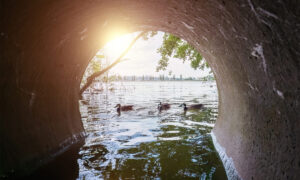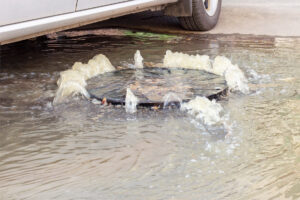Increasingly frequent heavy rainfall events are pushing combined sewers and stormwater overflow basins to their limits. Data loggers ensure more efficient use of your personnel and resources. Based on the data basis, your employees make data-driven decisions. The automation of recording obligations makes daily tasks even easier.
1. Meeting legal requirements
From country to country and sometimes on a regional scale, laws and regulations govern wastewater treatment, including stormwater overflow. From mandatory monitoringto logging, the requirements are extensive.
A few examples:
- In Germany, the amount of overflow must be recorded and submitted to the district office with a stormwater overflow report.
- In Denmark, visual event logging of stormwater overflow basins is mandatory to avoid unnecessary trips for on-site inspections.
In addition to the requirements of authorities for logging of stormwater overflow data, the data is an important factor in planning the expansion of residential areas.
2. Protecting the environment and water bodies
During a heavy rain event, the sewer system can reach its limits A large amount of rain flows into the sewer in a short time. Rainwater mixes with sewage and the combined sewer emerges from the system. The environment is polluted by the untreated wastewater diluted with the rainwater.
To initiate appropriate measures in this case, it is necessary to record exactly how much mixed water has leaked from the sewer. If this happens frequently and even with light rainfall, it is an indication of an overloaded or undersized sewer system.
3. Preventing clogging
During heavy rain, not only rainwater flows into the sewer Mud is washed in from the surrounding fields and meadows. Dirt and flotsam are swept away by the water.
This clogs the dirt grate, and the mud blocks the holes in the manhole cover. The water shoots over the manhole cover. The water masses make their way and flow into deeper basements and garages.
Such clogging can be detected and alerted accordingly. This means that appropriate measures can be initiated on the affected manholes.
Blockages and clogging can also occur at the rake of the stormwater overflow basin. Wood and dirt get caught in the rake and keep the stormwater overflow basin clean. The washed-up materials must be removed in regular intervals, for the water to continuously drain.
4. Early warning as a service for citizens
In the case of a so-called impoundment of water, the sewer is overloaded. The combined sewer water rises in the shaft and the pressure in the sewer increases. Due to the high pressure the manhole cover lifts, and the combined sewer water comes out of the manhole.
If the manhole cover is located on a road, traffic is affected or even can accidents occur. The lifted manhole cover is often invisible for the road users under the combined sewer water. If they drive through the water unsuspectingly, they can, for example, get their tires stuck in the sewer.
With an early warning system, road users can be informed of potential danger in near real time, for example with an LED band above the road. The potential danger, even roadblocks can be communicated via the LED bands.
5. Detecting critical situations at an early stage
Critical events can be detected at an early stage through permanent real-time monitoring of relevant data (fill level, flow rate, temperature, overflow). Alarming also makes it possible to inform relevant stakeholders automatically and to initiate targeted measures.
